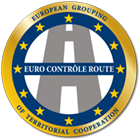Bilateral exchange (AT-HU) in Szigetszentmiklós
Close professional relations of the Austrian (Bundesanstalt für Verkehr) and Hungarian (National Transport Authority) transport authorities are not recent development, since it all began within the frame of Phare twinning project in 2002, but the idea of common checks has been raised this spring.
On the first day of the visit Mr. Nissler held a presentation about the structure, tasks, current experience of the reorganized Austrian inspectorate and later on introduced their mobile technical inspection unit at the Szigetszentmiklós premises of the Central Hungarian Regional Directorate.
On the 2nd & 3rd days both the Hungarian and Austrian mobile testing stations have carried out their activities focusing on technical roadside checks along the M0 and M5 highways. Preparation of the inspection devices has taken approximately half an hour, while selection of vehicles was performed with the assistance Police authority.
During initial time period inspectors performed checks on vehicles registered in their own countries and later on a big variety was provided for thanks to the dense transit traffic.
The staff of the two testing stations has performed their tasks continuously and by the end of the daily work they also used the opportunity to exchange information in an informal way.
The checks have been deemed as successful and coordinated work resulted in the efficient filter out of non-complying vehicles.
It caused a big surprise for those circulating on the roads that the checking activity was carried out in cooperation with the Austrian authority. Foreigners, in particular Austrian, Romanian drivers could experience the joint work of the two authorities, which basically ensured non-discrimination. Hungarian drivers in turn could witness that authorities are not exclusively targeting national transports. In the future we deem it necessary to further develop such „shadowing” like cooperation, which builds up trust and makes it possible to have an insight view onto the partner authorities’ methods.
16/02/2009 - 13:00
